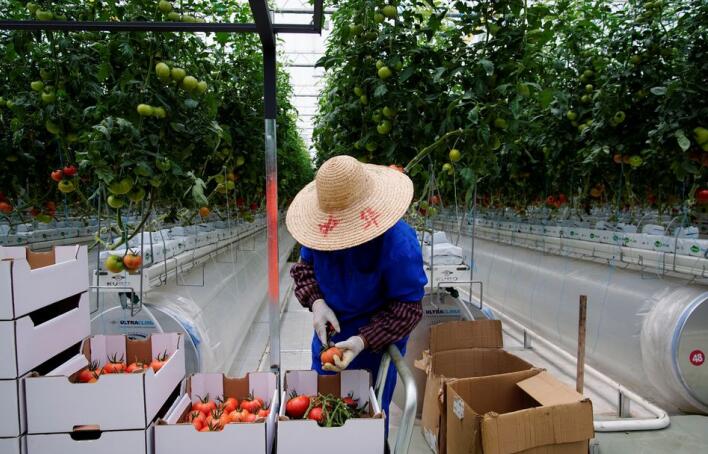Coronavirus Crisis Creates Changes in China's Food Supply Chain
China produces far more vegetables than any other country in the world. It has used greenhouses, special buildings for growing plants, for many years. But food supply problems created by coronavirus restrictions have sped the development of high-tech glass greenhouses in the country.
High-tech greenhouses
At Chongming Island near Shanghai, China's most populous city, workers collect tomatoes and cucumbers inside a new, glass greenhouse. The Dutch company FoodVentures operates the greenhouse. It began harvesting vegetables in May.
The greenhouse is one of many appearing near China's very large cities. These new structures use high-end technology to control water flow, temperature and lighting systems. The greenhouses grow vegetables within easy reach of a large and increasingly wealthy base of buyers.
Dirk Aleven is director of FoodVentures. Aleven noted the increase in demand for fresh food since the beginning of the coronavirus crisis. He told Reuters that in the past, fresh vegetables "were transported for thousands of kilometers, even within the borders of China."
"It is even more important now that fresh produce is produced at the spot where it's consumed," Aleven said.

Supply chain issues
Historically, China's vegetable production took place in a few areas and required a complex transport system to get the produce to markets in big cities.
That system faced major problems in 2020. Gayathree Ganesan of the Economist Intelligence Unit said the health crisis pushed the fresh food industry to change its supply chain system.
Built in or near cities to reduce distance to buyers, the new, high-tech greenhouses are usually cooperative businesses. Chinese companies work with greenhouse companies from the Netherlands, a leader in agriculture technology. The greenhouse near Shanghai is one co-op example.
Growth and the future
Greenhouses made of glass have seen an especially large increase in use.
The area used for glass greenhouses grew 28 percent in 2020, well above the 5.9 percent rise of 2019. In comparison, less costly plastic greenhouses saw six percent growth, reports Richland Sources, an agricultural support business.
Plastic greenhouses help protect crops, but are considered less efficient than glass greenhouses.
Greenhouse developers note that a growing number of wealthy Chinese seek better food produced with less chemical use. They are supporting the expanding greenhouse industry, the developers say.
Lim Xin Yi is executive director of sustainability at Pinduoduo, China's largest e-commerce system.
Lim noted that Chinese people are "buying more of their groceries online, and spending more on healthier choices" from food producers they trust.
Xu Dan, CEO of greenhouse operator Beijing HortiPolaris, said China could face some difficulties as it changes its farming and food supply system.
"The biggest challenges are people, people who have the knowledge to manage greenhouses to produce quality vegetables," he said. Xu added, "Most farmers are getting old and their way of production (is) also out of date, replacing such (a) big amount of farmers is really a big challenge."
I'm John Russell.













